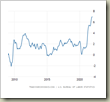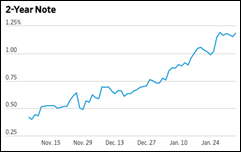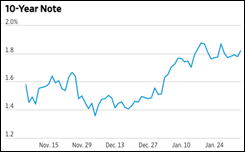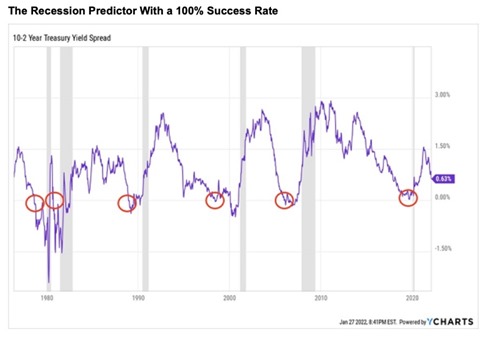Inflation Hot? (Part 2): Inverted Yield Curve and Recession
Posted By RichC on February 12, 2022
 Although this is really not a smooth continuation from yesterday’s “Inflation Hot” post, the financial and economic theme remains the same … so it will be considered “part 2.”
Although this is really not a smooth continuation from yesterday’s “Inflation Hot” post, the financial and economic theme remains the same … so it will be considered “part 2.”
The post left off with trying to stop inflation in the 1980s and forcing a recession, actually “back to back recessions.” We can all hope that isn’t needed in our current inflationary situation, but considering the cyclical nature of an economy, a recession seems likely at some point in the future. So the question becomes … how do we predict a recession and better for those of use planning, when is it likely?
Enter commentary from Michael Foster, an Investment Strategist. Earlier this month he detailed the popular Inverted Yield Curve predictor which tracks short and long term bond interest rates to each other – or the spread in the two rates. In the “inverted” scenario, the normal higher rate for longer term than shorter bonds is actually “inverts” and the shorter term bonds yield more than the longer term bonds. When this happens, followers of this predictor are confident that a recession will soon follow.
This chart shows the difference between the 10-year US Treasury yield and the 2-year US Treasury yield. As I write this, the former is 1.816% and the latter is 1.196%. Thus the “spread” between the two is 0.62, a positive number.
That makes sense. After all, when you buy a 10-year Treasury, your money is locked up for a decade, so you should be compensated for that lack of liquidity. As you can see in the chart, that’s how things normally go.
But six times over the last 45 years, that number has gone negative, meaning investors were getting less interest for holding a longer-term bond. That makes no sense! When it happens, it’s called an inverted yield curve. And every time this setup occurs, a recession follows, often within six to 18 months.
So if we want to predict the next recession, we just need to watch the Treasury yield curve and, once it flips, we know a recession is coming.



Comments